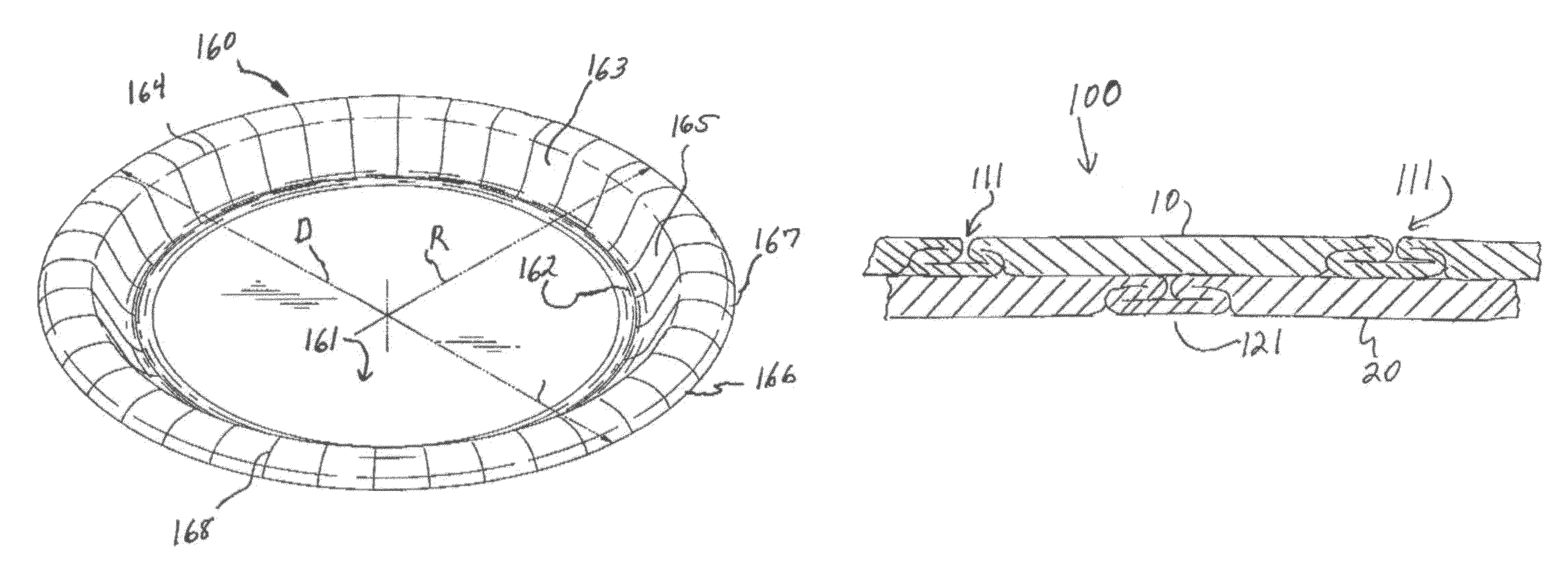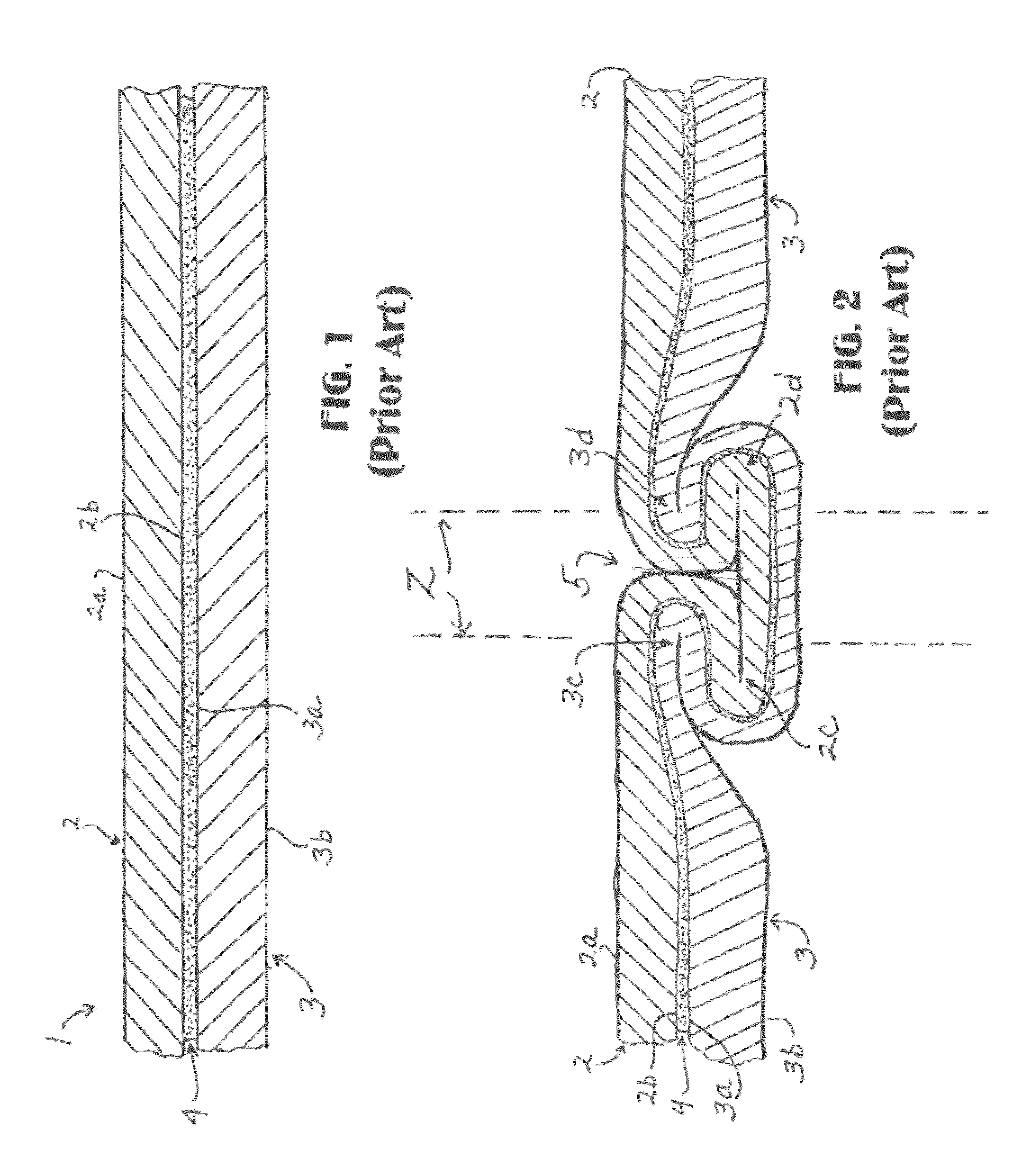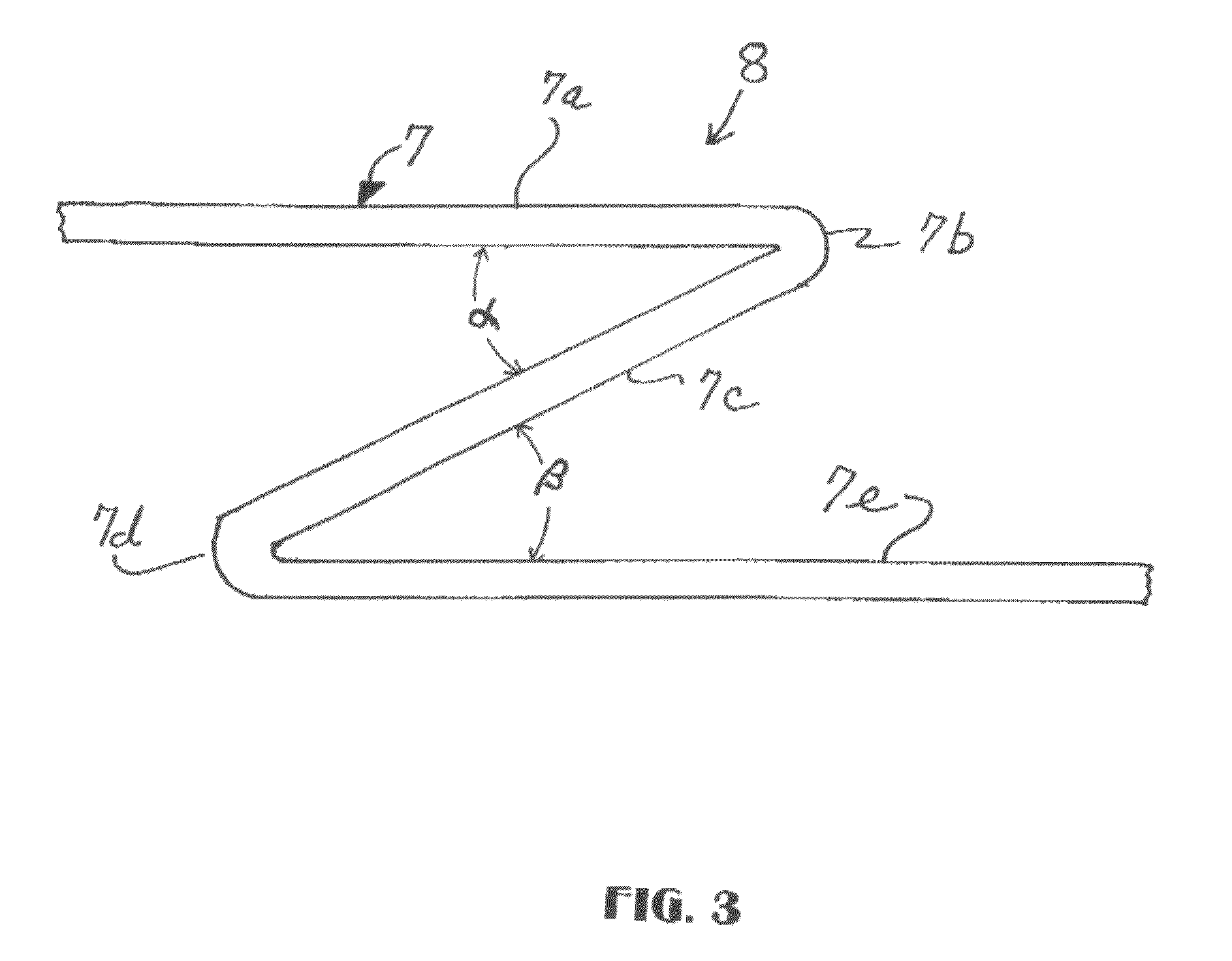Method for in-die lamination of plural layers of material and paper-containing product made thereby
a technology of indie lamination and material layers, applied in the field of making shaped products from plural layers of material, can solve the problems of high cost, inability to meet the needs of production,
- Summary
- Abstract
- Description
- Claims
- Application Information
AI Technical Summary
Benefits of technology
Problems solved by technology
Method used
Image
Examples
example a
[0096]A sample plate was fabricated from a single layer of nominal 230 lb / ream clay coated paperboard platestock. The blank was 11 3 / 32 inch diameter and was pressed into a formed shape in commercial plate forming tooling cleared for board of the weight and tested for various performance properties. The results of the test are set forth below in Table 1.
example b
[0097]A sample plate was fabricated from a single layer of nominal 260 lb / ream clay coated paperboard platestock. The blank was 11 3 / 32 inch diameter and was pressed into a formed shape in commercial plate forming tooling cleared for board of the weight and tested for various performance properties. The results of the test are set forth below in Table 1.
example c
[0098]A sample plate was fabricated from a single layer of nominal 320 lb / ream SBR coated paperboard platestock. The blank was 11 3 / 32 inch diameter and was pressed into a formed shape in commercial plate forming tooling cleared for board of the weight and tested for various performance properties. The results of the test are set forth below in Table 1.
PUM
 Login to View More
Login to View More Abstract
Description
Claims
Application Information
 Login to View More
Login to View More - R&D
- Intellectual Property
- Life Sciences
- Materials
- Tech Scout
- Unparalleled Data Quality
- Higher Quality Content
- 60% Fewer Hallucinations
Browse by: Latest US Patents, China's latest patents, Technical Efficacy Thesaurus, Application Domain, Technology Topic, Popular Technical Reports.
© 2025 PatSnap. All rights reserved.Legal|Privacy policy|Modern Slavery Act Transparency Statement|Sitemap|About US| Contact US: help@patsnap.com



